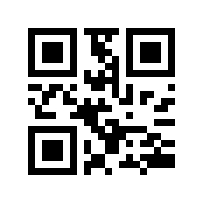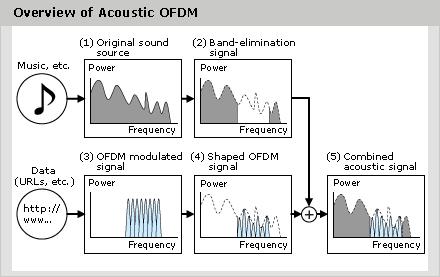Information Everywhere: 2d Visual and Audio Barcodes
Consumers want information everywhere and at all times: from access to their service accounts on phone IVRs, main portals, social networks, and mobile devices, to identifying music with programs such as Verizon’s V Cast Song ID, or iPhone apps such as midomi and shazam. The latest trend is to allow the consumer to easily retrieve additional information on anything they want, lately commercialized using Matrix codes, also known as two-dimensional bar codes.
 The most popular matrix code is a QR Code
, created by Japanese corporation Denso-Wave in 1994. The “QR” is derived from “Quick Response”, as the creator intended the code to allow its contents to be decoded at high speed. QR Codes are common in Japan, where they are currently the most popular type of two dimensional codes.
The most popular matrix code is a QR Code
, created by Japanese corporation Denso-Wave in 1994. The “QR” is derived from “Quick Response”, as the creator intended the code to allow its contents to be decoded at high speed. QR Codes are common in Japan, where they are currently the most popular type of two dimensional codes.
QR Codes are used in a broad context, including both commercial tracking applications and convenience-oriented applications aimed at mobile phone users (known as mobile tagging). QR Codes storing addresses and URLs may appear in magazines, on signs, buses, business cards or just about any object that users might need information about. Users with a camera phone equipped with the correct reader software can scan the image of the QR Code causing the phone’s browser to launch and redirect to the programmed URL. This act of linking from physical world objects is known as a hardlink or physical world hyperlinks. Users can also generate and print their own QR Code for others to scan and use by visiting one of several free QR Code generating sites.
I always thought that every Nike ID shoe should come with a Matrix Code for anyone to be able to scan it and launch the exact configuration to recreate it.
 The latest addition to data mobility is the Audio Barcode
: data embedded in sound waves that’s picked up by target devices with a microphone – mobile phones, for example –, analyzed by special software, and then extracted.
The latest addition to data mobility is the Audio Barcode
: data embedded in sound waves that’s picked up by target devices with a microphone – mobile phones, for example –, analyzed by special software, and then extracted.
Data to be transmitted is superimposed (embedded) by Acoustic OFDM, the technology behind Audio Barcode, in such a way that it is not detected by listeners. With a transmission rate greater than 1kbps, a URL or simple text transmission takes a mere one to two seconds.
This technology has many uses… from being able to append artist urls to every song, dynamically embed DRM information, or even combine this with audio/visual such as movies to allow sending out product information on specific scenes without having to display or affect the video at all… Just think how much information can be embedded everywhere with all these techniques… I already use 2d Barcode applications on my iPhone and I can’t wait to install an Audio Bar reader.